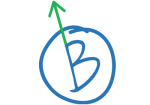In 2022, I reignited my reading habit, mainly non-fiction. I can’t spend a day without a Bengali storybook, but along with that, this year, I nurtured my habit of non-fiction reading. It also becomes one of my precious morning rituals.
To me, reading is like an experience of living in a simulation. While reading fiction allows me to live the life of the characters of the story, non-fiction helps me to experience the moments mentioned in the book. I may not have a management degree from a prestigious B-school, but some books give me an idea of how the alumni of such schools work in real life.
I read 16 books this year, including fiction and non-fiction, but these five books helped me go a step forward in my leadership journey.
Quiet: The Power of Introverts in a World That Can’t Stop Talking
Author: Susan Cain
Summary: The book is focused on introversion from a cultural point of view. The world is dominated by those who have a quick answer for every question and a fast opinion for every argument, but there is another half who observes and keeps quiet. For many years, society (mainly the Western one) has thought that success is for extroverts, who are expansive, sociable, active, risk-taking, light-hearted, bold, and comfortable in the spotlights. In this book, Susan Cain shows that the opposite half, who are reflective, cerebral, bookish, sensitive, thoughtful, serious, and subtle, are working in silence in every field and are shining in their respective positions.
How did it help me: It helped me to debunk the popular idea of leadership that says that a leader should always be vocal and bold. Leaders around the world, for ages, followed the Quiet path that helped them to reflect more, make better decisions, and lead competently. Many times, the world doesn’t know their names (because they don’t want that), but they become an integral part of their domain.
Note: Steve Wozniak, Rosa Park, and Eleanor Roosevelt are some of the figures that changed the world brilliantly in a quiet manner.
Good to Great
Author: Jim Collins
Summary: Reaching the level of good is satisfactory for us. But is reaching a good level enough? What about reaching great? Why some of the companies can reach too good but not too great? What is holding them back? This book shows the way from good to great by discussing the mindset of 11 companies that shift to the great level from the good level. Greatness can be achieved by incorporating discipline; in people’s practice, thoughts, and actions. The book states that a great leader (termed as a level 5 leader) doesn’t need to motivate her team, she only needs to place the right people in the right place of action, and the rest will fall in order
.How did it help me: The book gives me a vision for going not only beyond average but also beyond good. I learned that for a great leader, “We” always come after “I”. They work to make them successful and the next generation better. Also, saying no to the opportunities that don’t match the passion and expertise of the organizational DNA is the disciplined thought that needs to be followed to be great.
Note: A leader should preserve the core values and purpose of an organization while changing its strategies and operational practices.
The Obstacle is the way:
Author: Ryan Holiday
Summary: We always complain that we cannot reach our targeted goal because of unseen obstacles. This book shows a stoic approach to considering the obstacle as the way, not as the hurdle. One needs to change her Perception, Action, and will to make her obstacles her way. Only complaining about the situation and overthinking makes the situation worse. When we see things in a different light, then we act differently, and that leads to different, more positive results.
How did it help me: Leadership is about showing the right path even when the situation is not so right. Expecting the unexpected is part of organizational leadership, and the book pointed out how to deal with such situations without being afraid, disappointed, or annoyed.
Note: With the right perception, “A mistake becomes training.”
Lean In: Women, Work, and the Will to Lead
Author: Sheryl Sandberg
Summary: This book is focused on 𝐰𝐨𝐦𝐚𝐧𝐡𝐨𝐨𝐝, 𝐦𝐨𝐭𝐡𝐞𝐫𝐡𝐨𝐨𝐝, and 𝐥𝐞𝐚𝐝𝐞𝐫𝐬𝐡𝐢𝐩 with a very authentic approach. As a societal approach, women are considered primary caregivers to the family, and men are considered to be the providers. Society still has some hiccups to see the genders in the different worldviews and feels that women are not as good as men in the work. On the other hand, working mothers also face the same worldview, as it seems that they devote their time more to their profession than to their families. Through every line of this book, Sheryl encourages women to utilize the opportunities without thinking too hard and not leaving before actually leaving. As the book states, “guilt management” is as important as “time management” for the working mother.
How did it help me: My organization is a woman-centric organization where more than 85% of the teammates are women. This book gives me the decryption key to understanding my team in a better way. I can connect the way the book stated that we suppress ourselves from career opportunities thinking that our future professional responsibilities may affect our future personal liabilities. I also learned how an empathetic management team could boost the performance of its female teammates by believing in them and giving them the needed support.
Note: Gender equality in the workplace and home; encourages more women at the conference tables and more men at the kitchen tables; it is beneficial for both genders.
Drive: The Surprising Truth about What Motivates Us
Author: Daniel H. Pink
Summary: The book states how businesses treat motivation differently than scientific findings. Science focuses more on intrinsic motivation, like interests and satisfaction, whereas business focuses more on extrinsic motivation, like monetary incentives and recognition. Type X is a group of individuals who are driven by extrinsic motivation, whereas Type I is driven by intrinsic motivation. The three contributing factors of type I behavior are, Autonomy, Mastery, and Purpose. When three factors align in a line, the satisfaction coming from inside overdrive the recognition coming from outside.
How did it help me: It helped me to understand the importance of intrinsic motivation in the individual and at the organizational level. Money is important for taking care of our daily needs and bucket list. But money only has a motivator that doesn’t work for all. The glamour of monetary incentives lasts a maximum of one month after receiving them. But the intrinsic motivators, like autonomy and flow, push us to do excellence daily. At the expert level, for any stream, the real incentive for doing any work is the work itself. The real search should be for the factors that get us up in the morning.
Note: Money follows honest work; the reverse is not true.
Though every book goes in different directions, overall, all the books indicate that a defined purpose, clear perception, and a strong will to work with all make a person a good leader.


1 thought on “5 Books Those Helped in My Leadership Journey in 2022”
Thank you for sharing this gist with us. I am definitely going to add these in my reading list of next year 🙂